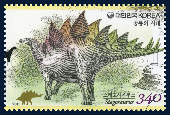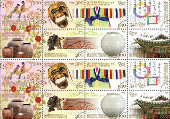-
 Korea.net's 24-hour YouTube channel
Korea.net's 24-hour YouTube channel- NEWS FOCUS
- ABOUT KOREA
- EVENTS
- RESOURCES
- GOVERNMENT
- ABOUT US
One of the first stories Korean children come across in life usually include the great founding myths of the ancient Korean nations of Gojoseon, Buyeo, Goguryeo, Balhae, Silla and Baekje, who's people once roamed across lands covering much of Manchuria and the Korean Peninsula.
Before the time of the commonly-called Three Kingdom's period of Goguryeo, Baekje and Silla (57 B.C.-A.D. 935), the first known country on the Korean Peninsula was Gojoseon (c. 2333 B.C.-108 B.C.). Continuing onward, while Buyeo, Gogurye, Baekje and Balhae share a common hereditary line, the standalone Silla has a founding story that is also well known among Korean history aficionados, individuals who might take an interest in a special series of stamps.
The bear's son
First founded in 2333 B.C. in the capital city of Asadal, Gojoseon lasted for some 2,200 years. The key components of the founding myth are the descent of Hwanung, who is the son of heaven, a bear and a tiger, the challenge to eat only garlic and mugwort, the transformation of the bear into a fair maiden, the marriage of Hwanung and the bear maiden and, finally, the birth of their son, Dangunwanggeom, who founded Gojoseon. All these tales have been beautifully illustrated in a special series of stamps first published in 2008 by Korea Post.
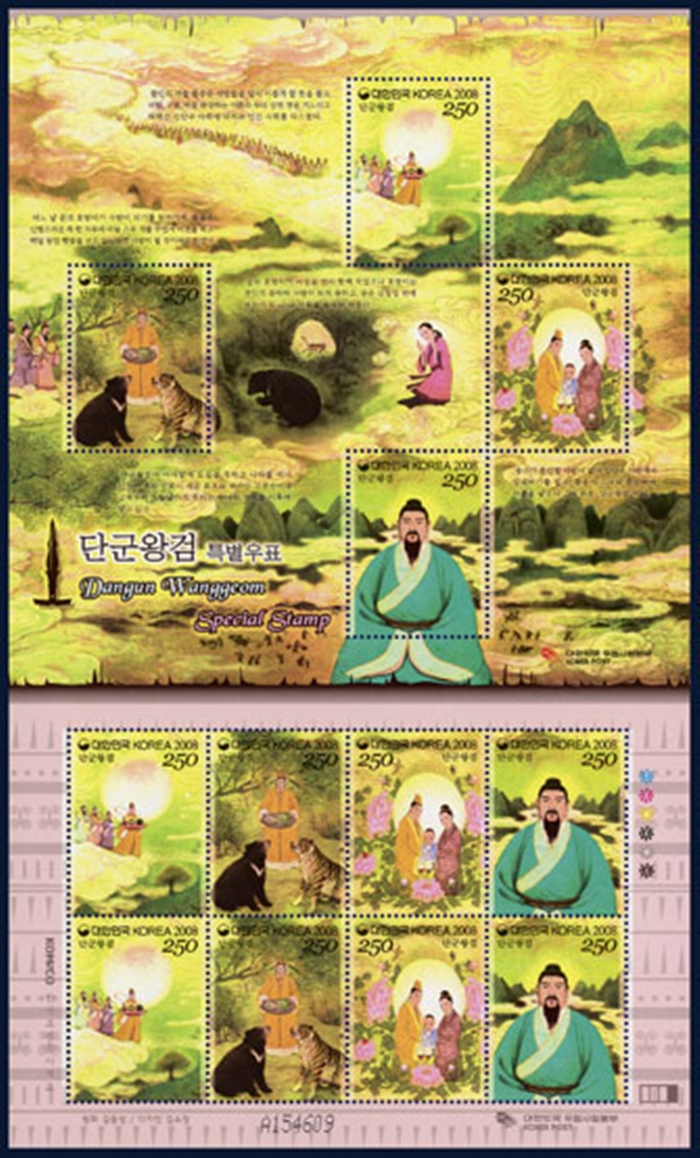
Dangun Wanggeom Special Stamp issued in 2008 (Image courtesy of the Korea Post)
A gold frog discovered by a horse
Haeburu, the king of northern Buyeo, went about the waters and mountains while praying for a child. During his journey, his horse stopped and wept in front of a boulder beside a pond. Beneath the stone, a child with the looks of a golden frog was discovered. He grew to become Buyeo's next king, Geumwa.
In 59 B.C., Buyeo moved its capital city eastward into what is today the modern Chinese province of Jilin, and it became Dongbuyeo, or East Buyeo. That Korean nation met its end in 494 when it surrendered to Goguryeo.
The stamp series printed in 2009 tells the stories of moving the capital under the orders of the Heavenly God, the making of Dongbuyeo, the discovery of King Geumwa and his coronation.
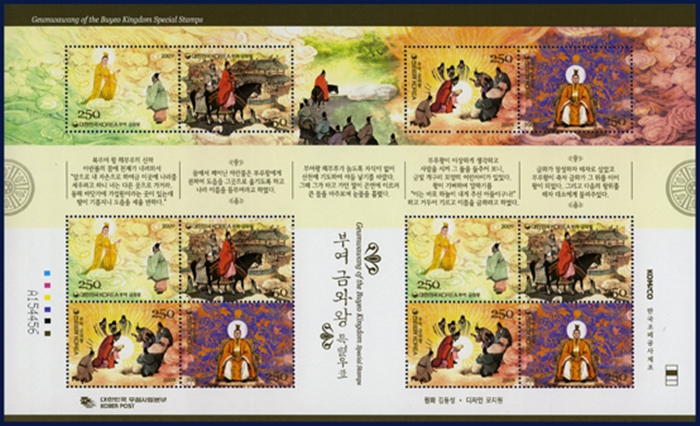
Geumwawang of the Buyeo Kingdom Special Stamps issued in 2009 (Image courtesy of the Korea Post)
Excellent marksman born from an egg
The founding of Goguryeo is best known for the dramatic portrayal it received on the small screen in the historical soap opera "Jumong." Goguryeo was founded when Yuhwa the daughter of the river god, Habaek, met the son of heaven, Hae Mo-su. However, after they separated, Yuhwa met Buyeo's King Geumwa, who took her under his wing. She became pregnant by a ray of sunlight and eventually gave birth to an egg. From this egg, the future ruler, Jumong, was born, a man who was an excellent marksman. As he grew up, he had to escape the jealous sons and courtiers of the then king.
When the final day came, he had to run away across a river, he was aided by a bridge formed by fish and turtles. He founded a new country, Goguryeo, near the mythical Biryusu site, as can be seen in the series of stamps published in 2010.
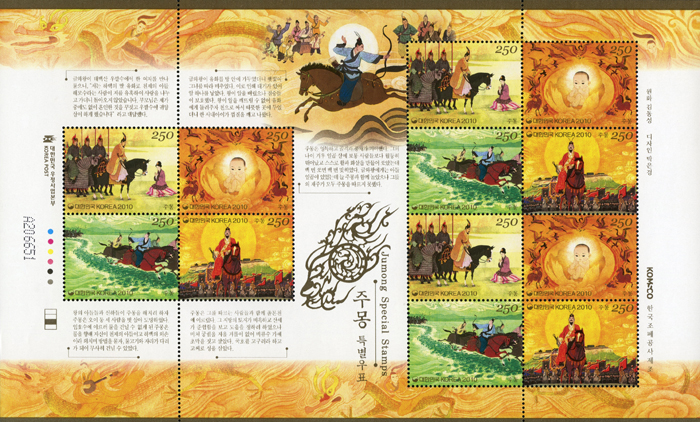
Jumong Special Stamps issued in 2010 (Image courtesy of the Korea Post)
By Paik Hyun
Korea.net Staff Writer
cathy@korea.kr
Most popular
- China warmly welcomes first Korea-born giant panda Fu Bao
- First hearing-impaired K-pop act hopes for 'barrier-free world'
- Novelist Hwang's 'Mater 2-10' shortlisted for Int'l Booker Prize
- Expats could account for 7% of population in 20 years: report
- Nat'l Fire Agency picks 137 elite staff for deployment abroad









